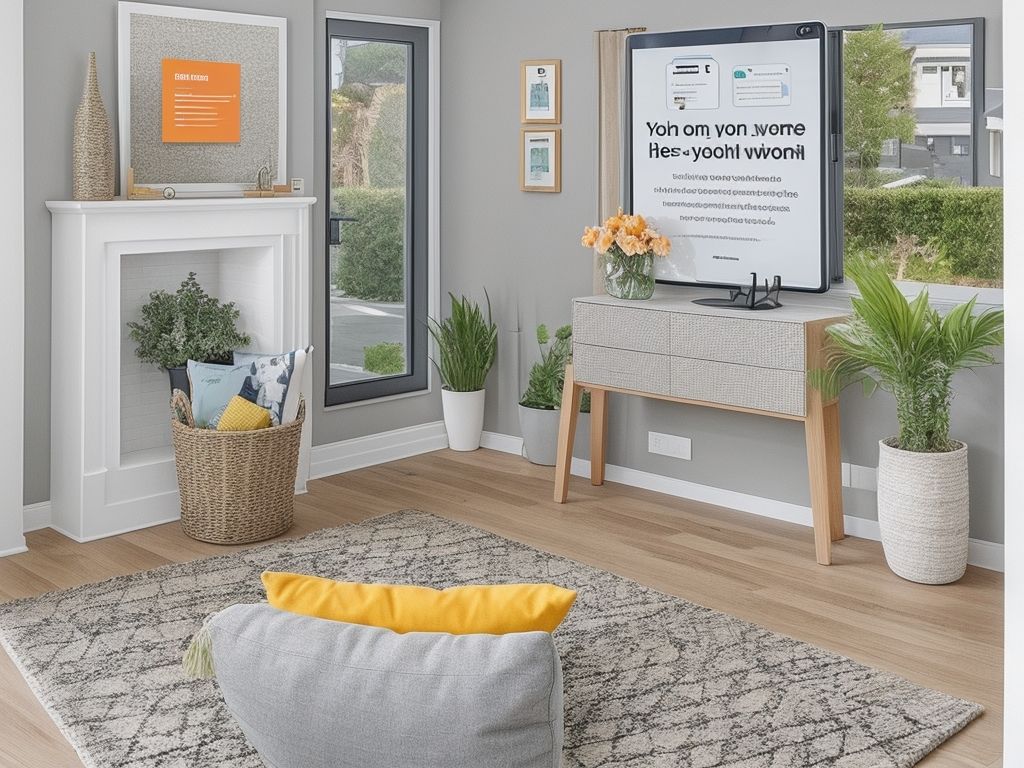How to Design a Home Depot Feedback Survey
Designing an effective feedback survey is crucial for Home Depot to gather valuable insights from customers. Collecting feedback allows to understand customer preferences, satisfaction levels, and areas for improvement. Surveys are a widely used method for feedback collection due to their convenience and ability to gather quantitative and qualitative information. When designing a feedback survey, there are key considerations to ensure its effectiveness.
The purpose of the survey should be defined clearly, whether it is to measure customer satisfaction, gather product feedback, or assess specific areas of the store experience. Identifying the target audience helps tailor the questionnaire and obtain relevant feedback. Choose an appropriate survey administration method, such as online surveys or paper-based surveys, based on the audience’s accessibility and preferences.
Clear and concise questions are essential to avoid confusion and ensure accurate responses. Incorporating a mix of question types, such as multiple choice, rating scales, and Likert scales, provides a comprehensive understanding of customer opinions. Including open-ended questions allows respondents to provide detailed feedback and suggestions. The survey should have a logical flow and organized sections to guide respondents smoothly.
To maintain the survey’s credibility, it is essential to avoid leading or biased questions that may manipulate responses. The survey length should be appropriate, considering respondents’ time and attention. Breaking the survey into sections addressing different aspects of the experience, such as customer service, product availability, and store layout, helps focus on specific areas and streamline the feedback collection process.
In terms of survey layout and format, the visual appeal is important for engagement. Clear and readable fonts should be chosen to ensure that respondents can easily understand the questions. Proper use of colors can be utilized to highlight important information and sections within the survey.
Once the survey design is completed, it is crucial to test and validate it before distribution. Conducting a pilot test helps identify any potential issues or confusion that respondents may face. After ensuring the survey’s effectiveness, it can be distributed to the target audience through appropriate channels, such as email invitations or in-store paper surveys.
Once feedback is collected, a comprehensive analysis allows to gain actionable insights. Analyzing the data can help identify trends, patterns, and areas for improvement. The feedback collected can then be utilized to implement changes and enhancements in various aspects of operations, ultimately improving customer satisfaction and loyalty. By designing a well-structured and effective feedback survey, can gather valuable insights to drive continuous improvement and provide an exceptional customer experience.
Key takeaways:
- Define the purpose: Clearly define the objective of the Home Depot feedback survey to ensure it aligns with the desired outcomes.
- Consider the target audience: Identify the specific demographic or customer segment the survey is intended for to gather relevant feedback.
- Create concise questions: Design clear and concise survey questions to capture meaningful responses without confusing the participants.
Why Collecting Feedback is Important
Collecting feedback is crucial for businesses like Home Depot because it provides valuable insights into customer experiences and preferences. It allows them to identify areas of improvement and make informed decisions. Furthermore, feedback helps measure customer satisfaction, identify trends, and promptly address any issues. By collecting feedback, Home Depot can better understand customer needs, identify potential areas for growth, and tailor their products and services accordingly. This process also aids in building customer loyalty and trust. Ultimately, collecting feedback is a vital tool for Home Depot to continuously enhance customer satisfaction and ensure success in a competitive market.
To understand customer needs, improve services, and foster customer loyalty, Home Depot must actively encourage customers to provide feedback through surveys, focus groups, or online platforms. Gathering a wide range of perspectives is crucial. Analyzing feedback and taking appropriate actions play a key role in Home Depot’s ongoing success.
Why Use Surveys for Feedback Collection
- Why Use Surveys for Feedback Collection
- Quantitative Data: Surveys provide measurable data that can be analyzed and compared across different customer segments and time periods.
- Qualitative Insights: Surveys enable businesses to collect detailed feedback, suggestions, and opinions from customers, providing them with valuable insights for improvement.
- Coverage: Surveys have a wide reach and can collect feedback from a large and diverse customer base.
- Cost-Effective: Conducting surveys is generally more cost-effective than other feedback collection methods, such as in-person interviews or focus groups.
- Efficiency: Surveys can be conducted online and automated, saving time and effort in data collection and analysis.
Pro-tip: When designing surveys, ensure the questions are clear, concise, and unbiased to encourage higher response rates and more accurate feedback.
Key Considerations in Designing a Home Depot Feedback Survey
Designing an effective Home Depot feedback survey requires careful consideration. In this section, we’ll explore key factors that go into creating a successful survey. Discover how defining the survey’s purpose, identifying the target audience, and determining the method of administration play crucial roles in gathering valuable feedback. We’ll also delve into creating clear and concise questions, utilizing a mix of question types, and considering the inclusion of open-ended questions. By ensuring logical flow, avoiding bias, and keeping the survey length appropriate, we can craft a survey that yields meaningful insights.
Define the Purpose of the Survey
The purpose of a survey is to gather specific information and opinions from a target audience in order to gain insights and make informed decisions. When designing a Home Depot feedback survey, it is crucial to define the purpose of the survey beforehand. This involves “defining the purpose of the survey” and identifying what you aim to achieve through the survey, such as understanding customer satisfaction, improving product selection, or enhancing store layout. By defining the purpose of the survey, Home Depot can ensure that the survey questions align with the desired outcomes and that the collected data is relevant and actionable. This will enable Home Depot to gather valuable feedback to make informed business decisions and improve the overall customer experience.
Identify the Target Audience
Identifying the target audience is of utmost importance when designing a Home Depot feedback survey. This crucial step ensures that the survey questions remain relevant and meaningful to the individuals who will be participating. The target audience for a Home Depot feedback survey may encompass several categories, including homeowners, DIY enthusiasts, contractors, or commercial customers. By gaining an understanding of the demographics, needs, and preferences of the target audience, the survey can be customized to gather valuable insights. For instance, incorporating questions related to specific products or services offered at Home Depot enables gathering feedback from those most likely to utilize them. Ultimately, the process of identifying the target audience facilitates a more focused and effective feedback survey.
Determine the Method of Survey Administration
To determine the method of survey administration for a Home Depot feedback survey, follow these steps:
- Identify the available survey administration methods, such as online surveys, paper surveys, or in-person interviews.
- Consider the target audience and their preferences. Online surveys may be more suitable for younger demographics, while paper surveys may be preferable for those who are not tech-savvy.
- Evaluate the logistics and resources required for each method. Online surveys are cost-effective and easy to distribute, while in-person interviews may require more time and manpower.
- Assess the level of interaction and engagement necessary. In-person interviews allow for more in-depth responses, while online surveys may be more convenient for participants.
- Consider the anonymity and confidentiality of responses. Online surveys can provide a sense of anonymity, while in-person interviews may create a more personal connection.
- Choose the survey administration method that aligns with your goals, target audience, resources, and level of interaction required.
In the mid-20th century, when conducting surveys, researchers relied heavily on paper questionnaires to collect feedback. These can be time-consuming and labor-intensive to distribute and analyze. Advancements in technology have revolutionized survey administration methods, making online surveys more prevalent and efficient in modern times. Today, organizations like Home Depot can easily determine the method of survey administration and gather feedback from customers through online surveys, allowing for quick and convenient data collection and analysis.
Create Clear and Concise Questions
When creating a Home Depot feedback survey, it is vital to generate questions that are both clear and concise. This is crucial in ensuring that survey respondents comprehend the survey and can provide precise and meaningful feedback. Clear questions are specific and avoid any ambiguous or confusing language, while concise questions are short and straight to the point. By crafting questions that are both clear and concise, the survey becomes more user-friendly, thereby increasing the likelihood of obtaining valuable insights. For instance, examples of clear and concise questions could be, “On a scale of 1-10, how satisfied were you with the store’s layout?” or “What suggestions do you have for improving our customer service?“.
Use a Mix of Question Types
To create a comprehensive and effective Home Depot feedback survey, it is crucial to incorporate a mix of question types. By doing so, you can obtain a wide range of valuable insights from your customers. Here are several question types that you should consider:
1. In order to gather quick and easy responses, provide multiple-choice options through close-ended questions.
2. Utilize Likert scale questions to ask participants to rate their satisfaction on a scale, enabling quantitative analysis.
3. Ask customers to rank their preferences or experiences in terms of importance or preference using ranking questions.
4. Allow customers to provide detailed feedback and insights in their own words by including open-ended questions.
5. Incorporate demographic questions to collect information about customers’ age, gender, location, etc., in order to gain a better understanding of their preferences and demographics.
Pro-tip: Strike a balance between open-ended and close-ended questions to ensure a comprehensive analysis of your customers’ feedback.
Remember to use a mix of question types!
Consider Including Open-ended Questions
Including open-ended questions in a Home Depot feedback survey is important to consider as it allows customers to provide detailed and personalized responses. These types of questions offer valuable insights into customer experiences, suggestions, and areas for improvement that may not be captured by closed-ended questions alone. When designing the survey, it is advised to consider including open-ended questions that encourage customers to share their thoughts, opinions, and suggestions in their own words. By doing so, it will help Home Depot gain a deeper understanding of their customers’ needs and preferences. Analyzing the responses from open-ended questions can provide valuable qualitative data to inform decision-making and drive improvements in the customer experience.
Ensure Logical Flow and Organization
When designing a Home Depot feedback survey, it is crucial to ensure logical flow and organization. To guarantee a seamless experience for respondents, here are some important considerations:
- Make sure to group questions by topic or section, including demographics, customer experience, and suggestions for improvement.
- Arrange the questions in a logical order, starting with general ones and then moving on to more specific ones.
- Use clear headings and subheadings to guide respondents through the survey effectively.
- Maintain a coherent flow by avoiding jumping back and forth between topics.
- Keep the survey concise and avoid asking repetitive questions.
By organizing the survey logically, respondents will have a smooth and efficient experience, resulting in more accurate and valuable feedback for Home Depot.
Avoid Leading or Biased Questions
In order to create an effective feedback survey for Home Depot, it is crucial to refrain from asking leading or biased questions. Biased questions have the potential to unintentionally influence participants and produce inaccurate results. To prevent this, it is important to employ neutral language, avoid making assumptions, and provide balanced answer options. Instead of using leading questions such as “Did you find the store layout confusing?“, it is recommended to use neutral inquiries like “How would you describe the store layout?” This approach ensures that respondents are able to provide unbiased and truthful feedback, resulting in more precise insights for enhancement. Here’s a pro-tip: Evaluate the survey questions from a neutral standpoint to identify and eliminate any potential biases or leading language.
Keep the Survey Length Appropriate
Keeping the survey length appropriate is crucial for maintaining a successful Home Depot feedback survey, as it ensures maximum participation and accurate responses. Here are some essential guidelines to consider in order to achieve this:
- Define the purpose of the survey to determine the necessary length.
- Identify the target audience and take into account their time constraints.
- Create clear and concise questions to avoid unnecessary length.
- Utilize a variety of question types to engage survey participants.
- Consider incorporating open-ended questions to gather additional insights.
- Ensure a logical flow and organization to make the survey easy to navigate.
- Avoid using leading or biased questions, as they can unnecessarily extend the survey length.
- Maintain an appropriate survey length, as it helps prevent respondent fatigue.
Following these guidelines will assist Home Depot in developing an effective feedback survey that customers can easily complete, while also capturing valuable insights.
Structuring the Home Depot Feedback Survey
When it comes to designing a Home Depot feedback survey, structuring is key. We need to carefully consider each section to gather valuable insights. In this article, let’s dive into the different sections that make up the survey. From demographic information to product availability, store layout to staff knowledge, and even the checkout process, we’ll cover it all. Hang tight as we explore the essential elements that will help Home Depot improve and elevate the customer experience.
Section 1: Demographic Information
Please find below the table displaying the demographic information that should be included in the Home Depot feedback survey:
| 1. Age | 2. Gender | 3. Income |
| 4. Education Level | 5. Employment Status | 6. Homeownership |
| 7. Location | 8. Frequency of Visits to Home Depot | 9. Previous Purchases From Home Depot |
This section, Section 1: Demographic Information, aims to gather demographic data about the customers, helping Home Depot better understand the preferences and needs of their diverse customer base. These insights can be used to tailor their services and offerings to meet the specific requirements of different customer segments.
Section 2: Customer Experience
This table outlines the key considerations in designing Section 2: Customer Experience of the Home Depot feedback survey. It covers various aspects such as purpose, target audience, method of administration, question types, and survey length. It emphasizes the importance of logical flow, avoiding leading or biased questions, and including open-ended questions to allow customers to provide detailed feedback.
Section 3: Product Selection and Availability
Section 3: Product Selection and Availability
Product selection and availability are crucial factors in creating a successful Home Depot feedback survey. This section provides customers with the opportunity to share their valuable input on the range of products offered and their availability, both in-store and online. To collect specific details in an organized manner, it is beneficial to include a table in this section.
| Product Category | Rating (1-5) | Comments |
| Hardware | 4 | Great variety, but some items are out of stock |
| Appliances | 3 | Limited options, could use more choices |
| Electrical | 5 | Excellent selection and always in stock |
By incorporating this section into the survey, Home Depot can gain valuable insights into customers’ satisfaction with the product variety offered and identify areas for improvement in terms of availability. This enables the company to make informed decisions, meet customer demands, and enhance the overall shopping experience.
Section 4: Store Layout and Appearance
The store layout and appearance are crucial factors in providing a positive shopping experience. The design and organization of a store can greatly impact customer satisfaction and influence their purchasing decisions. Here is a table summarizing the key elements to consider in Section 4: Store Layout and Appearance.
| Aspect | Importance |
|---|---|
| Store layout | Efficient flow, clearly designated sections |
| Merchandise display | Well-organized, appealing showcase |
| Signage | Clear, informative, and visible signage |
| Lighting | Adequate brightness, highlighting key areas |
| Cleanliness | Neat and tidy, with regular cleaning |
| Aesthetics | Attractive decor and visually pleasing design |
Creating an inviting and visually appealing store can create a welcoming atmosphere and increase customer engagement, leading to higher sales and customer loyalty.
The layout and appearance of the Home Depot stores have been meticulously planned to provide customers with a seamless and enjoyable shopping experience. The store layout is designed to facilitate easy navigation and efficient movement, ensuring that customers can easily find the products they need. The store’s appearance is maintained to the highest standards of cleanliness and aesthetics, creating a pleasant environment for customers to explore and shop. These considerations have contributed to Home Depot’s reputation as a trusted and preferred destination for all home improvement needs.
Section 5: Staff Knowledge and Assistance
Section 5: Staff Knowledge and Assistance of the Home Depot Feedback Survey focuses on evaluating the staff’s knowledge and assistance. To gather comprehensive data, consider including the following in the survey:
- Assess the staff’s product knowledge by asking questions about their familiarity with various departments and specific products.
- Evaluate the availability and helpfulness of staff when assisting customers with their inquiries or providing recommendations.
- Inquire about the staff’s response time and willingness to resolve issues or concerns.
- Include questions about the overall friendliness and professionalism of the staff members.
- Ask customers to rate their satisfaction with the level of support they received from the staff during their shopping experience.
- Provide an opportunity for customers to provide specific examples or suggestions for improving staff knowledge and assistance.
Section 6: Checkout Process
Section 6: Checkout Process
Designing the checkout process section in a Home Depot feedback survey requires careful consideration to gather valuable insights.
- Include questions about the ease of finding checkout counters and the availability of staff.
- Ask about the speed of the checkout process and whether any issues or delays were experienced.
- Inquire about the friendliness and helpfulness of the staff during the checkout process.
- Include questions about the accuracy of pricing and any problems encountered with coupons or discounts.
- Consider asking customers if they were offered assistance with loading and unloading their purchases.
- Include an open-ended question to allow customers to provide any additional feedback or suggestions for improving the checkout process.
Section 7: Suggestions for Improvement
Section 7: Suggestions for Improvement of a Home Depot feedback survey provides customers with an opportunity to share their valuable input on how the store can enhance its services and offerings.
- Offer a platform for customers to freely express their concerns, ideas, and suggestions for improvement.
- Include open-ended questions that encourage customers to share specific areas they believe could be enhanced.
- Ask for suggestions related to product selection, store layout, staff knowledge, and checkout process.
- Encourage customers to provide constructive feedback and offer solutions rather than simply complaining.
- Consider implementing a rating scale or ranking system to prioritize suggestions based on customer input.
Designing the Survey Layout and Format
When it comes to designing a Home Depot feedback survey, nailing the layout and format is crucial. In this section, we’ll delve into the key elements that make a survey visually appealing, the importance of using clear and readable fonts, and how to make proper use of colors. So, get ready to create a survey that not only captures valuable insights but also engages respondents with its eye-catching design. Let’s make every question count!
Consider the Visual Appeal
When designing a Home Depot feedback survey, it’s important to consider the visual appeal to ensure a pleasant and engaging experience for respondents.
- Use a clean and professional layout that is visually appealing and easy to navigate.
- Utilize clear and readable fonts to enhance readability and comprehension of the questions.
- Choose colors wisely, using a consistent color scheme that is visually appealing and aligns with the brand.
Fact: Studies have shown that visually appealing surveys can lead to higher response rates and more accurate data.
Use Clear and Readable Fonts
When creating a Home Depot feedback survey, it is crucial to incorporate clear and readable fonts. The utilization of fonts like Arial or Helvetica ensures easy comprehension and legibility for participants. It is important to avoid fancy or decorative fonts that may result in difficulty to read or confusion. Employing clear and readable fonts enhances the overall survey experience, ultimately encouraging participants to provide accurate and thoughtful feedback.
Make Proper Use of Colors
When designing your Home Depot feedback survey, it is important to make proper use of colors. By choosing colors that align with the Home Depot brand, such as orange and white, you can enhance the overall experience and improve response rates. Additionally, using a contrasting color scheme will ensure that the text is easily readable. You can also utilize color psychology to evoke the desired emotions or responses from participants. However, it is important to keep the survey visually appealing without overwhelming the participants with too many colors. Using colors strategically, you can differentiate sections or highlight important information. Fun Fact: The color orange, associated with enthusiasm and creativity, makes it a great choice for a Home Depot feedback survey.
Testing and Validating the Survey
Before launching a Home Depot feedback survey, it’s crucial to thoroughly test and validate it to ensure accuracy and effectiveness. Follow these steps to achieve reliable results:
- Conduct a pilot test with a small group to identify any issues or confusion in the survey, as part of the process of testing and validating the survey.
- Analyze the data collected during the pilot test to refine and improve the survey questions, as part of the process of testing and validating the survey.
- Implement the revised survey on a larger sample size to gather more comprehensive feedback, as part of the process of testing and validating the survey.
- Assess the reliability and validity of the survey by measuring internal consistency and correlation among questions, as part of the process of testing and validating the survey.
- Validate the survey results by comparing them with other established measures or industry benchmarks, as part of the process of testing and validating the survey.
Suggestions for a successful survey:
- Ensure clear and concise survey instructions to minimize confusion among participants, which is an important aspect of testing and validating the survey.
- Use a variety of question types to capture different aspects of customer feedback, enhancing the testing and validating process of the survey.
- Consider offering incentives to encourage participation and improve response rates, which can contribute to the effectiveness of testing and validating the survey.
- Regularly review and update the survey to reflect changing customer needs and preferences, making testing and validating an ongoing process.
Distributing and Collecting Responses
To efficiently distribute and collect responses for a Home Depot feedback survey, careful planning and efficient strategies are required. Here are some key steps to consider:
- Choose multiple channels: Distributing and collecting responses can be achieved by utilizing various platforms like email, social media, and in-store promotions. This will help to reach a wider audience and gather valuable feedback.
- Offer incentives: Encourage participation in the survey by providing incentives such as discounts, gift cards, or entry into a sweepstakes. This approach is effective in increasing response rates and obtaining more accurate feedback.
- Use clear and concise questions: To ensure accurate and helpful responses, it is important to use clear and concise questions that are easy to understand and answer.
- Follow-up reminders: To improve response rates, gentle reminders can be sent to those who haven’t completed the survey. This will prompt them to participate and provide their valuable feedback.
- Monitor responses: Regularly monitoring responses and analyzing the data is crucial to identify trends and gain valuable insights that can be used to improve Home Depot’s services.
By following these tips, Home Depot can efficiently distribute and collect responses for their feedback survey, gaining valuable insights to enhance their services.
Analyzing and Utilizing the Feedback
Analyzing and utilizing the feedback received from a Home Depot feedback survey is crucial for improving customer experience and making informed business decisions. Here are some key steps to effectively incorporate and utilize the feedback:
| – Thoroughly analyze the feedback to identify trends, patterns, and areas of improvement. This analysis helps in understanding customer preferences and expectations. |
| – Categorize the feedback into different themes or topics to facilitate easier analysis. This categorization enables a comprehensive understanding of customer sentiments and concerns. |
| – Prioritize the feedback based on its impact and feasibility of implementation. By prioritizing, you can address the most critical issues first and ensure efficient allocation of resources. |
| – Share the feedback findings with relevant teams or departments within the organization. Collaboration among different teams ensures that the feedback is considered across various areas of the business. |
| – Take action by implementing necessary changes or improvements based on the feedback. By taking prompt action, you can enhance the customer experience and address identified areas for improvement. |
| – Monitor the impact of the implemented changes and continue gathering feedback for continuous improvement. Regular monitoring helps in evaluating the effectiveness of the implemented changes and identifying any further adjustments needed. |
Incorporating these steps will enable Home Depot to effectively analyze and utilize the feedback, leading to improved customer satisfaction and informed decision-making.
Some Facts About How to Design a Home Depot Feedback Survey:
- ✅ The Home Depot Transaction Survey is designed to track the quality of service delivery in real time. (Source: Our Team)
- ✅ The survey offers a raffle entry as an incentive for customers to complete it. (Source: Our Team)
- ✅ The Home Depot customer satisfaction survey is an example of a transactional or event survey. (Source: Our Team)
- ✅ Transactional surveys like the Home Depot survey serve as a quality control tool. (Source: Our Team)
- ✅ The survey allows customers to voice their complaints, helping to resolve issues and retain customers. (Source: Our Team)
Frequently Asked Questions
How to Design a Home Depot Feedback Survey?
Designing a Home Depot feedback survey requires careful consideration of various factors. Here are some frequently asked questions and answers to guide you in creating an effective survey:
1. What are transactional surveys and why are they important in measuring customer satisfaction?
Transactional surveys are sent to customers after they have completed a transaction with the organization, such as a purchase at Home Depot. These surveys help measure the quality of service delivery and assess customer satisfaction based on their perception of the interaction. They are critical in identifying areas for improvement and retaining loyal customers.
2. What should be the focus of a transactional survey for Home Depot?
The transactional survey for Home Depot should focus on the quality of service interaction experienced by customers during their recent visit to the store. It should capture feedback on aspects such as the helpfulness of staff, the availability of products, the ease of finding items, and the overall experience. This ensures that the survey addresses the critical-to-quality requirements of Home Depot customers.
3. Are there any best practices for designing transactional event surveys?
Yes, there are some best practices to follow when designing transactional event surveys. These include keeping the survey concise and easy to understand, using rating scales (such as CSAT score or Net Promoter Score) to measure satisfaction, optimizing for near real-time feedback, and offering an optional open-ended question for customers to provide additional comments. It is also important to consider respondent burden and ensure the survey does not become too lengthy or burdensome for participants.
4. How can I ensure the data validity of a transactional survey?
To ensure the data validity of a transactional survey, it is crucial to design the questionnaire carefully. Avoid including instructions or questions that do not align with the customer’s actual experience. Additionally, use clear and unambiguous language in the survey instructions and questions. Regularly reviewing and updating the survey based on customer feedback is also essential to maintain data validity.
5. What are some ways to incentivize customer participation in a Home Depot feedback survey?
One effective incentive for customers to complete a Home Depot feedback survey is to offer a raffle entry as a reward. This increases the likelihood of participation. Additionally, clearly communicate the benefits of participating, such as the opportunity to directly influence the improvement of services and products, leading to a better overall customer experience.
6. How can Home Depot solicit and address customer complaints in their transactional surveys?
Home Depot can include an open-ended question in their transactional surveys to allow customers to voice their complaints or concerns. This provides an opportunity for customers to share their negative experiences and helps the company identify areas that need improvement. Home Depot should then take necessary steps to address these complaints promptly and effectively, showing customers that their feedback is valued.
- What Polls Reveal About Sleeping Together Early and Long-Term Relationship Success - July 7, 2025
- How to Design a Hard Harry Potter Trivia Challenge - October 4, 2023
- How to Design a Dear Peachie Makeup Preference Poll - October 4, 2023












